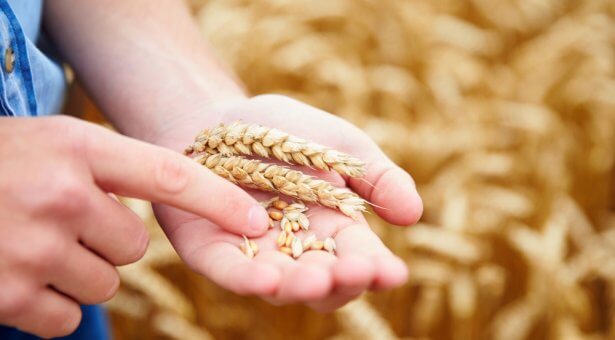Improving grain size and shape in wheat

Wheat is critical for global food security and provides over 20% of human calorie and protein intake.
Increasing wheat yield is vital to meeting future worldwide food requirements, because it is anticipated that we will need to produce 60% more wheat by 2050 if we are to meet the global demand.
Only a fraction of the genetic potential within wheat has been exploited to date because of the complex nature of the wheat genome. Our scientists have been using state-of-the-art techniques such as gene editing to unlock some of the hidden potential for increasing yield.
Research into grain shape and size as part of Professor Cristobal Uauy’s research programme has identified genes which control wheat grain size, enabling an increase both width and length of the grains.
An increase in grain size not only has the potential to increase yield but also improve crop emergence and vigour.
Mutations in these genes are being incorporated into commercial breeding lines for exploitation by the wheat breeding industry through the Breeders Toolkit.
What we’ve achieved so far
- Characterisation of a gene, GW2, which is responsible for control of grain width and construction of a triple mutant (one mutation in each of the three wheat genomes) shows an increase in seed size of 20%
- Characterisation of the P1 gene which increases wheat grain weight and specific (hectolitre) weight (i.e. more wheat can be packed into the same volume which is important when transporting/shipping grain)
- Bulked seed of these mutants, backcrossed into an appropriate wheat background, has been given to wheat breeders through the Breeders Toolkit, led by Dr Simon Griffiths in the Designing Future Wheat programme, alongside the relevant perfect markers
- Breeders are testing this material with the aim of introducing valuable traits of interest into their breeding programmes
- Bulked seed containing both the GW2 mutations and the P1 gene are now available for Breeders
Our research to improve grain shape and size in wheat spans two of our Institute Strategic Programmes; Genes in the Environment and Designing Future Wheat.
The value of historic discoveries in wheat, made at the John Innes Centre were estimated by Brookdale Consulting, in 2018, to be worth £4.9bn globally.
Over the next 25 years independent evaluation suggests that the work programme currently being undertaken in wheat is estimated as contributing £100m Gross Value Added to the UK and £4.3bn to the rest of the world through improved productivity.
To have maximum impact from our research at the earliest opportunity, it is important that we get our research findings on improving wheat to breeders at the earliest opportunity.
As part of the Designing Future Wheat programme, scientists can propose novel mutants and genes to cross into commercial varieties.
Wheat breeders are consulted to identify the most useful traits for this process which is then undertaken to provide the background variety plus and minus the new trait of interest. This seed is bulked up and the breeders take this seed and test it in locations across the UK and Northern France. Once material has been assessed at several trial sites, breeders are given access to this advanced germplasm for incorporating into their breeding programmes.
Simon Berry from Limagrain says “The novel genetic variation in grain size identified by Professor Uauy, which has been made available via the breeders toolkit in Designing Future Wheat, is being used by Limagrain as a part of its pre-breeding strategy.
Grain size is an important yield component and the ability to use of perfect, gene-based SNP markers to follow specific alleles for bolder, bigger grains could help to improve milling yields, increase the specific weight of varieties (a key trait for recommendation in the UK) and may also help improve yield stability.
We are now introgressing these new sources of variability into our elite germplasm so that we can assess their impact on end use quality and yield in our multi-site trials. Without Cristobal’s research program, supported by DFW, we would not be as far ahead in this exciting area of study as we are today”.
What we hope to achieve next
- Breeders incorporate novel genetic variants for larger grain size into their breeding programmes
- New varieties released by breeders with improved shape from longer seeds will also allow better “packing” for more efficient transit, reducing transport costs. Larger seed size will also reduce wastage during harvest
- New varieties with larger seeds may enable an increase in wheat yield if growing conditions allow
